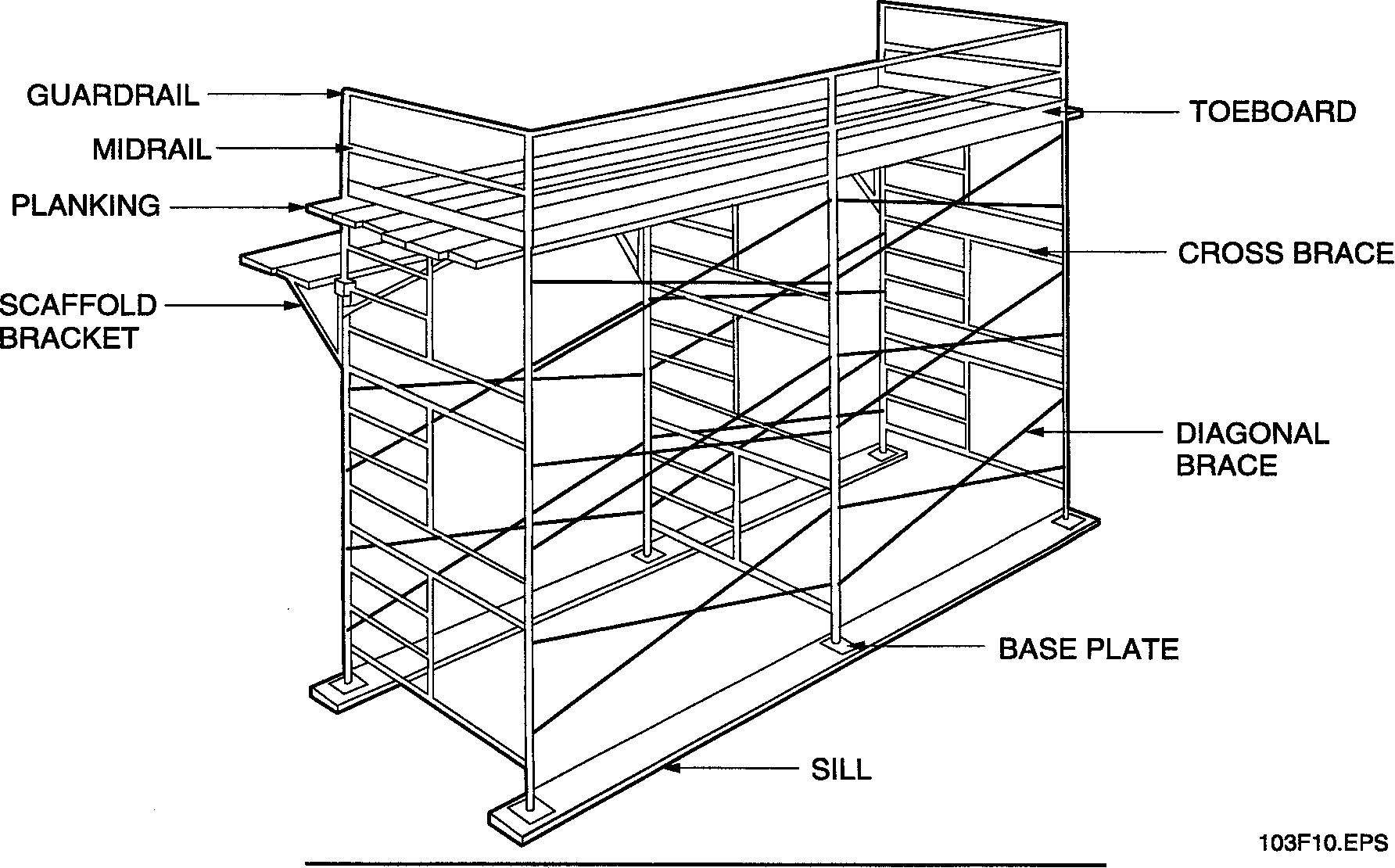
scaffolding
There are 3 primary types of scaffolding: Tube and Coupler, Prefabricated Modular Systems, and H-Frame Facade Modular System.

Tube & Coupler
Prefabricated Modular


H-Frame facade Modular
Masonry scaffolding is used to make brick, block, or stone masonry unit laying more efficient and safer when working higher than can be reached from the ground. There are many companies who specialize in engineering, assembly, and disassembly of scaffolding systems. Scaffolding is an item closely regulated and inspected by OSHA so installation must be done safely and follow standard code.


The below are the basic parts of a Tube and Coupler scaffolding system:

Scaffold Jacks – A base plate or jack plate that serves as load bearing base.
Mud Sill (or Plate)- Wood placed under baseplates to distribute load and minimize sinking

Stacking Pins / Couplers – used to secure uprights when stacking scaffolding post to post
Leveling Legs / Uprights – The ‘standard’ or post which is the upright component attaching to the jacks.
Braces – Diagonal and/or Cross section bracing component
Ledger – Horizontal brace (also called Runner)
Transom – Horizontal cross section brace which the planks bear upon (also called bearer)

Scaffold Ties

Access Ladders – Safe access to each level
Scaffold Boards – Decking or batten boards for use as working platform
Brackets – For extending the width of the working platforms

Clamps / Pins – Swivel or Rigid clamping mechanisms which ties bracing to upright posts

Guard Rail and End Rail – Often multi-rail system for fall protection safety
When installing scaffolding the ground should be level, compacted, and drainable. The first ‘lift’ or ‘level’ of scaffolding should be installing plumb and level as they are the foundation for all higher ‘lifts’. First the jacks are placed as recommended by manufacturer or project engineer (often +/- 7′) Ladders are required for each lift for safe access. Once all braces and connectors are finished, the deck boards should be installed. These are typically #1 graded 2×10 planks or laminated veneer lumber and will overhang the top rail of the jacks. Thus 8′ long or 16′ long pieces of lumber are often used. The boards are secured together by nailing or cleats to avoid movement/shifting. Then the second ‘lift’ can be begin. Fall protection aspects should be installed from the second lift up, such as toe boards, handrails, etc. A common OSHA requirement is to secure tall scaffold systems if their heigh is more than 4 times the width (for example 6′ wide – 24′ tall). OSHA commonly requires a ‘competent person’ (scaffold erection manager) to inspect the scaffold daily prior to use, and keep track of findings on an inspection log.
